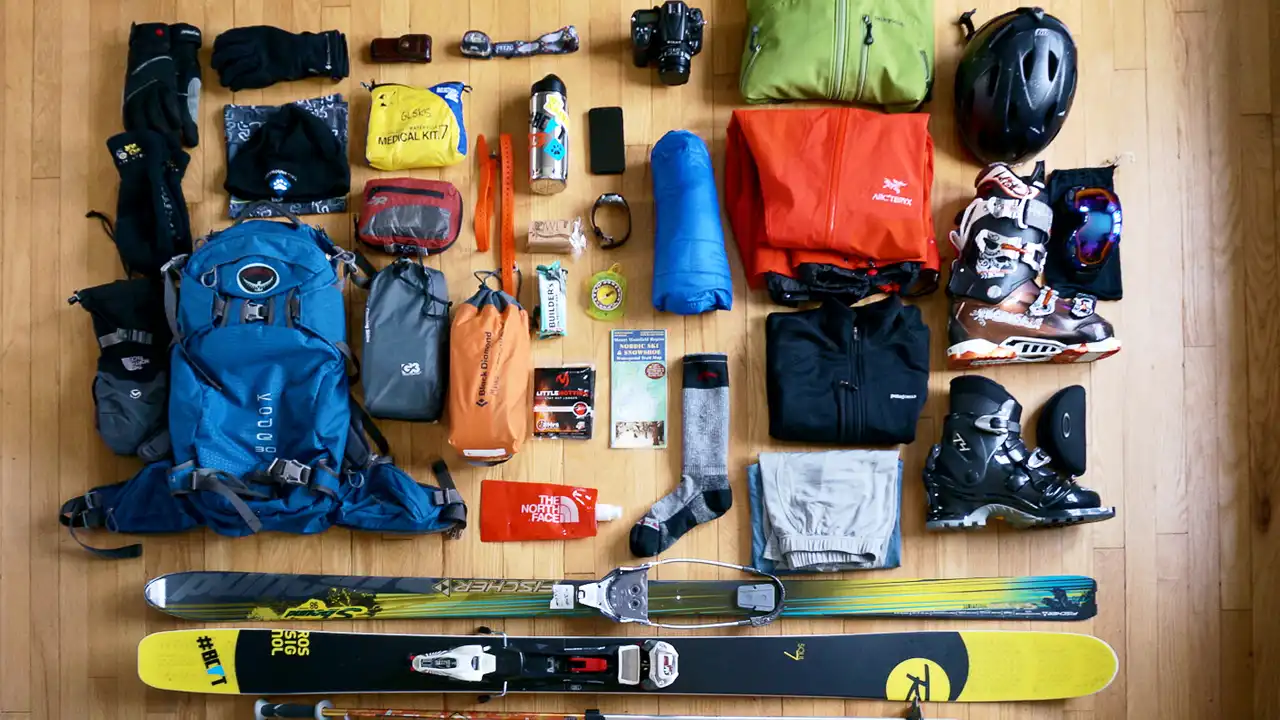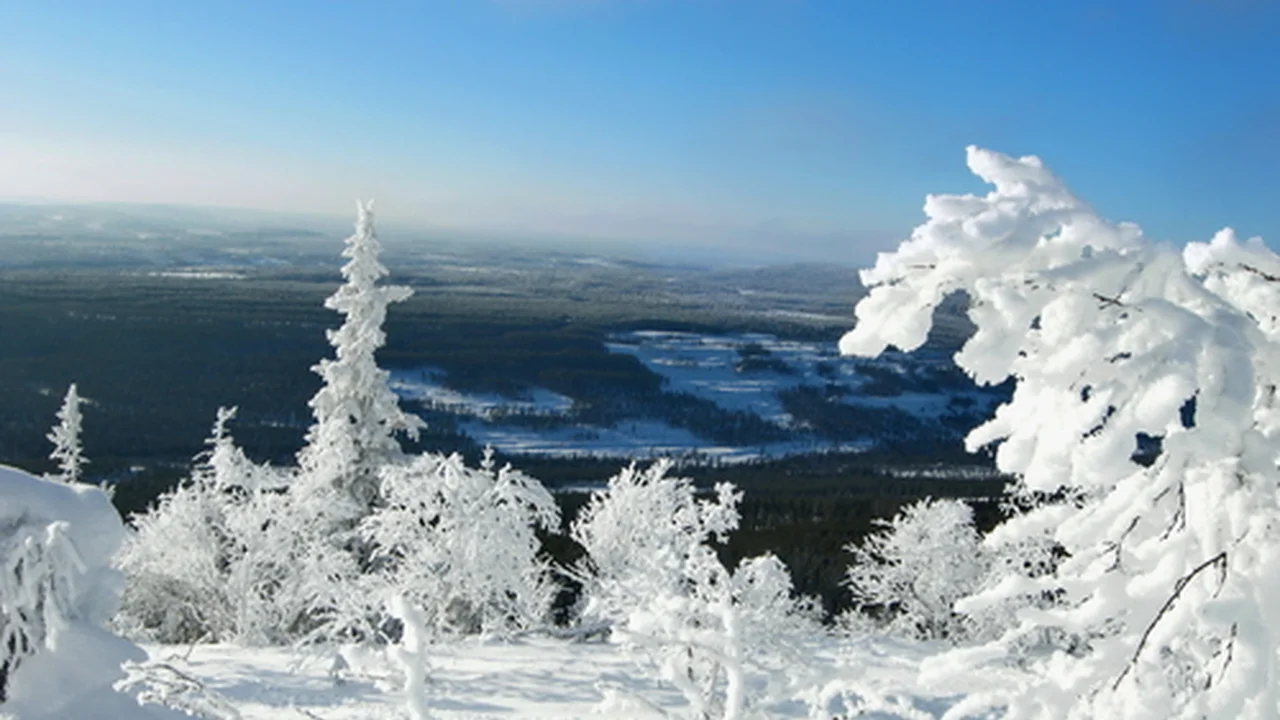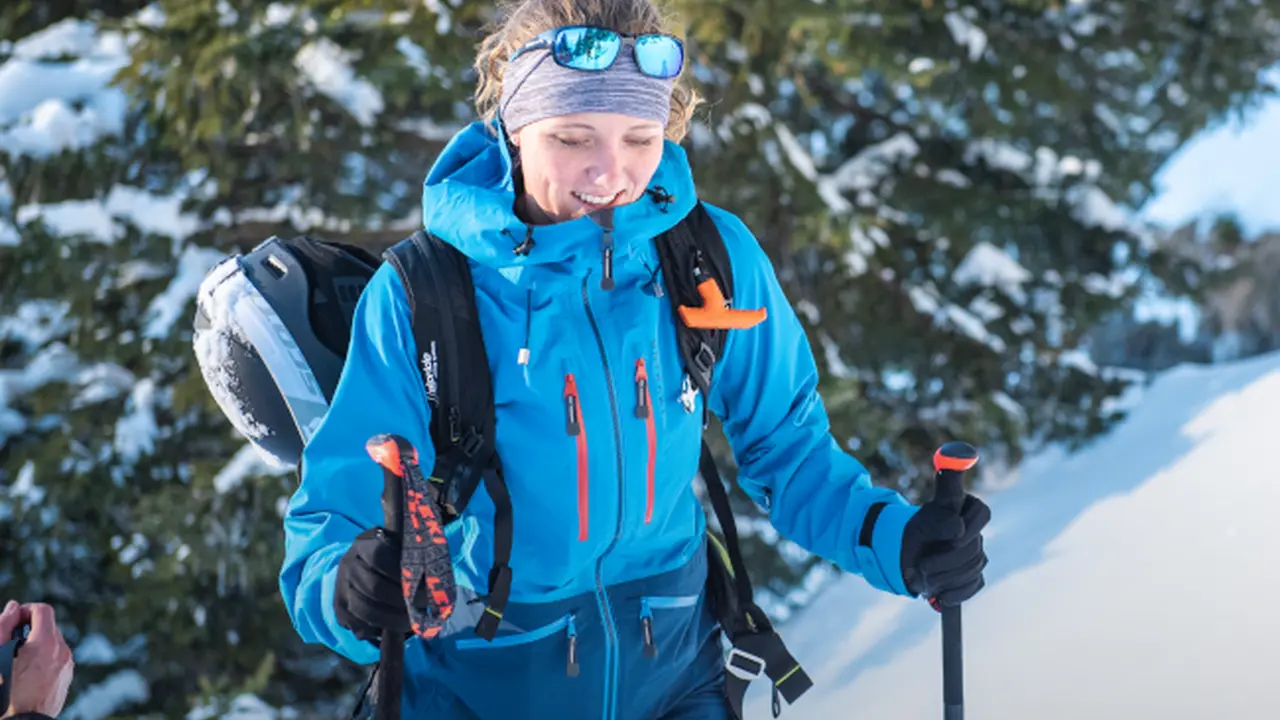
Backcountry Skiing Equipment List Your Essential Gear Guide
Hey there, fellow snow enthusiasts! So, you're thinking about venturing beyond the ropes, leaving the groomed trails behind, and exploring the untouched beauty of the backcountry? That's awesome! Backcountry skiing offers an unparalleled sense of freedom, incredible views, and the thrill of earning your turns. But before you head out, it's absolutely crucial to be properly equipped. This isn't your average resort day; the backcountry demands a different level of preparation and a specific set of gear. Let's dive into everything you'll need to make your backcountry adventures safe, fun, and unforgettable.
Avalanche Safety Gear Your Non Negotiable Essentials
First things first: avalanche safety. This isn't optional; it's the foundation of any backcountry trip. You need to know how to use this gear, and practice with it regularly. Seriously, your life and the lives of your partners depend on it.
Avalanche Transceiver Beacon Finding Your Friends
An avalanche transceiver, often called a beacon, is a device that sends and receives a radio signal. In the event of an avalanche, it helps you locate buried companions and allows others to find you if you're caught. Always turn it on before you leave the trailhead and keep it on until you're back at the car. Make sure it's fully charged!
- Recommended Product: BCA Tracker4 Avalanche Transceiver
- Features: This is a popular choice for its ease of use and fast processing. It has a large display, multiple-burial indicator, and a 'Big Picture' mode for quick assessment.
- Use Case: Ideal for both beginners and experienced users due to its intuitive interface.
- Price Range: Around $350-$400 USD.
- Comparison: Compared to more complex models, the Tracker4 prioritizes speed and simplicity, which can be crucial in high-stress situations.
Avalanche Probe Pinpointing the Burial
Once you've narrowed down the search area with your beacon, an avalanche probe is used to pinpoint the exact location of a buried person. It's essentially a collapsible pole that you push into the snow. The longer the probe, the better, as it allows you to search deeper.
- Recommended Product: Black Diamond Quickdraw Carbon Probe 320
- Features: Lightweight carbon construction, quick-deploying mechanism, and a durable steel tip. The 320cm length is excellent for deeper snowpacks.
- Use Case: Essential for efficient and accurate probing during a rescue.
- Price Range: Around $100-$130 USD.
- Comparison: Carbon probes are lighter than aluminum, which is a plus for long tours, but can be slightly more fragile. The 320cm length offers a good balance of reach and packability.
Avalanche Shovel Digging Them Out
After locating and probing, the shovel is your primary tool for excavation. You'll be surprised how much snow you need to move. Look for a sturdy, collapsible shovel with a metal blade. Plastic shovels just won't cut it in dense avalanche debris.
- Recommended Product: Mammut Alugator Ride 3.0 Shovel
- Features: Ergonomic D-grip handle, hardened aluminum blade, and a compact design. It's known for its durability and efficient snow removal.
- Use Case: Crucial for rapid snow excavation in a rescue scenario.
- Price Range: Around $80-$100 USD.
- Comparison: Many shovels offer similar features, but the Alugator Ride 3.0 stands out for its robust build and comfortable handle, which makes a difference when you're digging hard.
Ski Touring Gear Getting Up the Mountain
Now that we've covered safety, let's talk about the gear that actually gets you up and down the mountain.
Backcountry Skis and Bindings The Right Setup
Unlike resort skis, backcountry skis are designed to be lighter for the uphill climb, but still perform well on the descent. Backcountry bindings allow your heel to lift for skinning uphill and then lock down for skiing downhill.
- Recommended Ski: Black Crows Corvus Freebird (for versatile performance)
- Features: A good balance of weight for touring and stability for varied snow conditions. It's a versatile ski that handles powder, crud, and even firmer snow.
- Use Case: Excellent for intermediate to advanced skiers looking for a do-it-all backcountry ski.
- Price Range: Skis alone around $700-$900 USD.
- Comparison: Lighter than many resort skis, but still offers good downhill performance, unlike ultra-light race-oriented touring skis.
- Recommended Binding: Dynafit ST Rotation 10 (for reliability and safety)
- Features: A tech binding with a rotating toe piece that helps prevent pre-release, offering a safer and more reliable descent.
- Use Case: Ideal for skiers who prioritize safety and downhill performance in a tech binding.
- Price Range: Around $500-$600 USD.
- Comparison: Offers a higher level of safety and elasticity than simpler pin bindings, making it a great choice for those who ski aggressively in the backcountry.
Ski Touring Boots Comfort and Efficiency
Backcountry boots are designed with a walk mode that allows for a greater range of motion for climbing, and then lock into ski mode for the descent. Look for a balance of uphill comfort and downhill stiffness.
- Recommended Product: Scarpa Maestrale RS (for performance and walkability)
- Features: A popular choice known for its excellent walk mode range of motion and stiff downhill performance. It's a great all-around boot.
- Use Case: Suitable for experienced backcountry skiers who want a boot that can handle challenging descents.
- Price Range: Around $700-$800 USD.
- Comparison: Strikes a great balance between uphill efficiency and downhill power, making it more versatile than ultra-light touring boots or heavy freeride boots.
Climbing Skins Gripping the Snow
These are strips of material (usually synthetic or mohair blend) that attach to the base of your skis. They have a directional nap that allows them to glide forward but grip when you push off, preventing you from sliding backward on the uphill. Make sure they are cut to fit your skis properly.
- Recommended Product: G3 Minimist Universal Climbing Skins
- Features: Lightweight, packable, and offer a good balance of glide and grip. The universal tip and tail connectors are easy to use.
- Use Case: Essential for efficient uphill travel on skis.
- Price Range: Around $180-$220 USD.
- Comparison: Mohair blends offer better glide, while synthetic skins are more durable and offer better grip. The Minimist strikes a good balance.
Ski Poles Adjustable and Reliable
Adjustable ski poles are a must for backcountry skiing. You'll want to shorten them for the uphill climb and lengthen them for the descent. Look for poles with a comfortable grip and a reliable locking mechanism.
- Recommended Product: Black Diamond Traverse Pro Ski Poles
- Features: Durable aluminum construction, FlickLock Pro adjustability, and comfortable touring grips.
- Use Case: Versatile poles for both uphill and downhill travel.
- Price Range: Around $100-$120 USD.
- Comparison: Aluminum poles are generally more durable than carbon, which is important for backcountry use where poles can take a beating.
Backpack and Carrying Essentials Your Mobile Base
Your backpack is your mobile base camp, carrying all your essentials for the day.
Backcountry Specific Backpack Carrying Your Gear
Look for a pack designed for backcountry skiing, typically in the 25-40 liter range for day trips. It should have dedicated pockets for avalanche safety gear, ski carry options (A-frame or diagonal), and easy access to essentials.
- Recommended Product: Osprey Kamber 32 (Women's) / Kresta 30 (Men's)
- Features: Designed specifically for snow sports, with easy access to avalanche tools, helmet carry, and comfortable suspension.
- Use Case: Perfect for day tours and shorter overnight trips.
- Price Range: Around $180-$220 USD.
- Comparison: Osprey packs are known for their comfort and thoughtful features, making them a reliable choice for long days in the backcountry.
First Aid Kit Be Prepared for Anything
A well-stocked first aid kit is non-negotiable. Include items for blisters, cuts, sprains, and any personal medications. Know how to use everything in it.
- Recommended Product: Adventure Medical Kits Mountain Series Hiker Medical Kit
- Features: Comprehensive kit with supplies for common backcountry injuries and ailments.
- Use Case: Essential for treating minor injuries and stabilizing more serious ones until professional help arrives.
- Price Range: Around $30-$50 USD.
Repair Kit Fixing on the Fly
Things break in the backcountry. A small repair kit can save your day. Include duct tape, zip ties, a multi-tool, binding screws, and a small length of cord.
- Recommended Product: Leatherman Skeletool Multi-Tool
- Features: Lightweight and compact, with pliers, knife, bit driver, and bottle opener.
- Use Case: Handy for quick fixes on bindings, poles, or other gear.
- Price Range: Around $70-$90 USD.
Navigation and Communication Staying on Track and Connected
Getting lost or being unable to communicate is a serious risk in the backcountry.
Map and Compass Your Analog Backup
Even with GPS, always carry a physical map of the area and a compass. Know how to use them. Batteries die, electronics fail.
- Recommended Product: Suunto MC-2 Compass
- Features: High-quality, reliable compass with a global needle, declination adjustment, and clinometer.
- Use Case: Essential for traditional navigation and as a backup to electronic devices.
- Price Range: Around $60-$80 USD.
GPS Device or App Knowing Where You Are
A dedicated GPS device or a reliable GPS app on your phone (with downloaded offline maps) is incredibly useful for navigation and tracking your progress.
- Recommended Product: Garmin inReach Mini 2 (Satellite Communicator with GPS)
- Features: Compact satellite communicator that offers two-way messaging, interactive SOS, and basic navigation. Requires a subscription.
- Use Case: Crucial for communication outside of cell service and for emergency situations.
- Price Range: Device around $350-$400 USD, plus monthly subscription.
- Comparison: While a dedicated GPS unit like a Garmin GPSMAP 66i offers more detailed mapping, the inReach Mini 2 prioritizes communication and SOS capabilities, which are paramount in the backcountry.
Headlamp and Extra Batteries Seeing in the Dark
Even if you plan to be back before dark, always carry a headlamp. Delays happen, and you don't want to be caught out without light.
- Recommended Product: Petzl Actik Core Headlamp
- Features: Rechargeable battery, multiple light modes, and good brightness for its size.
- Use Case: Essential for early starts, late finishes, or unexpected delays.
- Price Range: Around $70-$80 USD.
Clothing and Layering Staying Warm and Dry
Layering is key in the backcountry. You'll be working hard on the uphill and then exposed to cold on the downhill. You need to be able to adjust your clothing to regulate your temperature.
Base Layers Wicking Away Sweat
Start with a moisture-wicking base layer (merino wool or synthetic) to keep sweat away from your skin.
- Recommended Product: Smartwool Merino 250 Base Layer Crew and Bottom
- Features: 100% merino wool for excellent warmth, breathability, and odor resistance.
- Use Case: Ideal for regulating body temperature during varied activity levels.
- Price Range: Around $100-$120 USD per piece.
Mid Layers Insulation for Warmth
A fleece or lightweight puffy jacket for insulation. This layer provides warmth when you're less active or during descents.
- Recommended Product: Patagonia R1 Fleece Pullover
- Features: Lightweight, breathable, and highly insulating Polartec Power Grid fleece.
- Use Case: Excellent for active insulation during uphill climbs or as a mid-layer on colder days.
- Price Range: Around $130-$150 USD.
Outer Shell Jacket and Pants Weather Protection
A waterproof and breathable shell jacket and pants are essential to protect you from wind, snow, and rain. Look for features like pit zips and full-length side zips for ventilation.
- Recommended Product: Arc'teryx Beta AR Jacket and Beta AR Pants
- Features: GORE-TEX Pro fabric for ultimate waterproofness and breathability, durable construction, and practical features for backcountry use.
- Use Case: Your primary defense against harsh weather conditions.
- Price Range: Jacket around $600-$700 USD, Pants around $450-$550 USD.
- Comparison: While expensive, Arc'teryx is renowned for its quality and performance, offering superior protection and durability compared to less expensive alternatives.
Gloves or Mittens Hand Protection
Carry at least two pairs: a lighter pair for the uphill and a warmer, waterproof pair for the downhill and colder conditions.
- Recommended Product: Hestra Fall Line Gloves (for warmth and dexterity)
- Features: Durable leather construction, warm insulation, and a comfortable fit.
- Use Case: Versatile gloves for a range of backcountry conditions.
- Price Range: Around $150-$200 USD.
Hat and Neck Gaiter Head and Neck Warmth
A warm hat and a neck gaiter are crucial for retaining heat, especially during cold ascents or windy descents.
Ski Socks Comfort and Blister Prevention
Good quality ski socks (merino wool or synthetic) are essential for comfort and preventing blisters. Avoid cotton!
Food and Hydration Fueling Your Adventure
You'll be burning a lot of calories in the backcountry, so bring plenty of food and water.
Water Bottles or Hydration Reservoir Staying Hydrated
Carry enough water for your trip. Insulated bottles or a hydration reservoir with an insulated tube are good options to prevent freezing.
- Recommended Product: Hydro Flask 32 oz Wide Mouth Bottle (with Flex Cap)
- Features: Double-wall vacuum insulation keeps liquids cold for 24 hours and hot for 12 hours.
- Use Case: Excellent for keeping water from freezing in cold temperatures.
- Price Range: Around $45-$55 USD.
High Energy Snacks and Lunch Fueling Your Body
Pack calorie-dense snacks like nuts, energy bars, dried fruit, and a substantial lunch. Think easy-to-eat items that won't freeze solid.
Thermos with Hot Drink A Warm Treat
A thermos of hot tea, coffee, or soup can be a real morale booster on a cold day.
Miscellaneous but Important Items Don't Forget These
These might seem small, but they can make a big difference.
Sunscreen and Lip Balm Protecting Your Skin
The sun's rays are intensified at altitude and reflected by snow. Protect your skin!
Ski Goggles and Sunglasses Eye Protection
Always carry both. Goggles for stormy conditions and sunglasses for sunny days. UV protection is key.
Helmet Head Protection
Protect your most important asset. A lightweight, well-ventilated ski helmet is a must.
Pocket Knife or Multi-Tool Small but Mighty
Always handy for various tasks.
Emergency Shelter Bivy Sack or Tarp
For unexpected overnight stays or emergency shelter from the elements.
Whistle Signaling for Help
A simple but effective way to signal for help.
Hand Warmers and Toe Warmers Extra Comfort
These can be a lifesaver on really cold days.
Alright, so that's a pretty comprehensive list, right? Remember, this isn't about buying every single item on day one. Start with the absolute essentials, especially the avalanche safety gear, and build your kit as you gain experience. Always check the weather and avalanche forecast before you go, tell someone your plans, and never venture into the backcountry alone. Stay safe out there, have fun, and enjoy the incredible world of backcountry skiing!
:max_bytes(150000):strip_icc()/277019-baked-pork-chops-with-cream-of-mushroom-soup-DDMFS-beauty-4x3-BG-7505-5762b731cf30447d9cbbbbbf387beafa.jpg)






